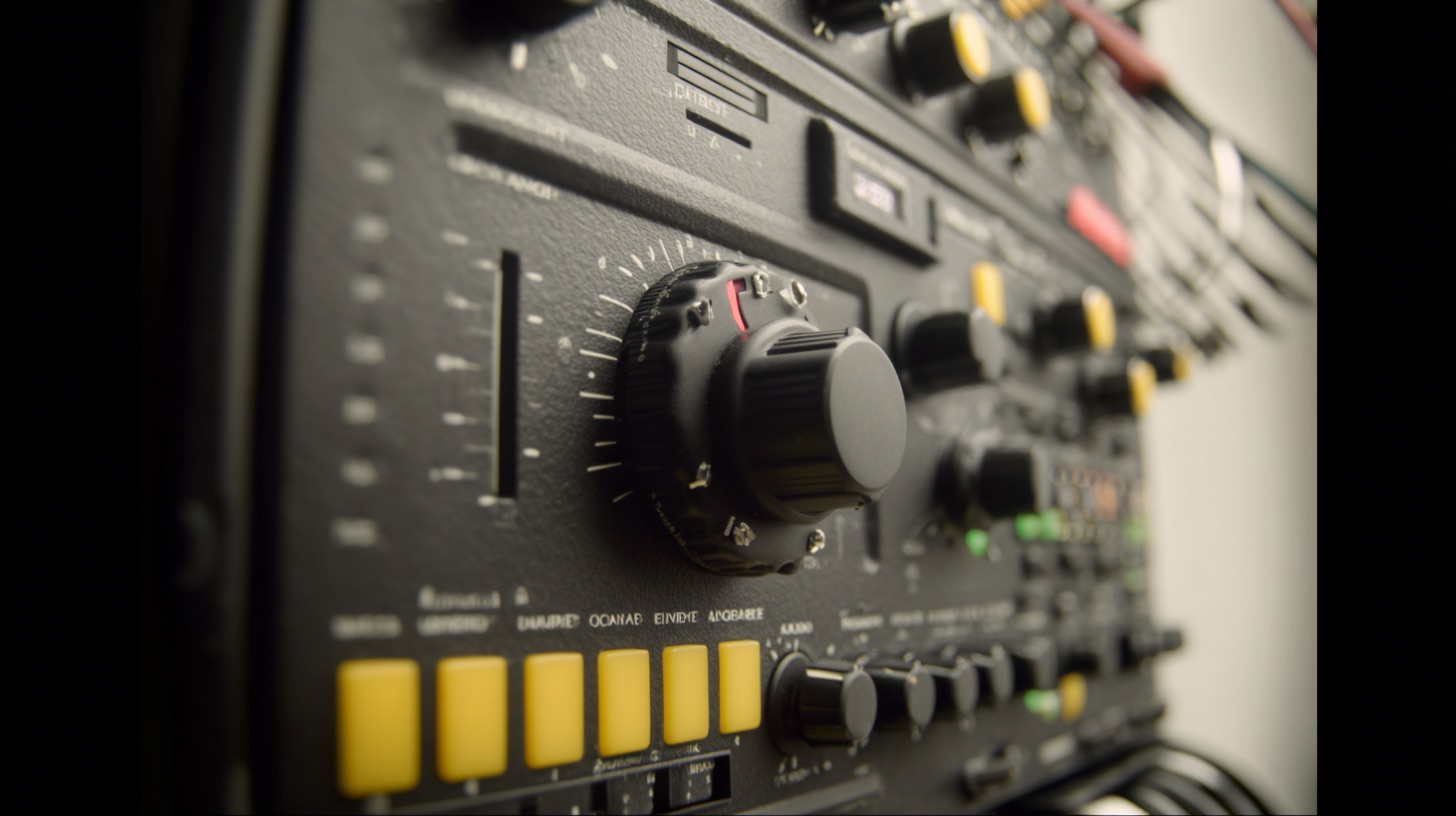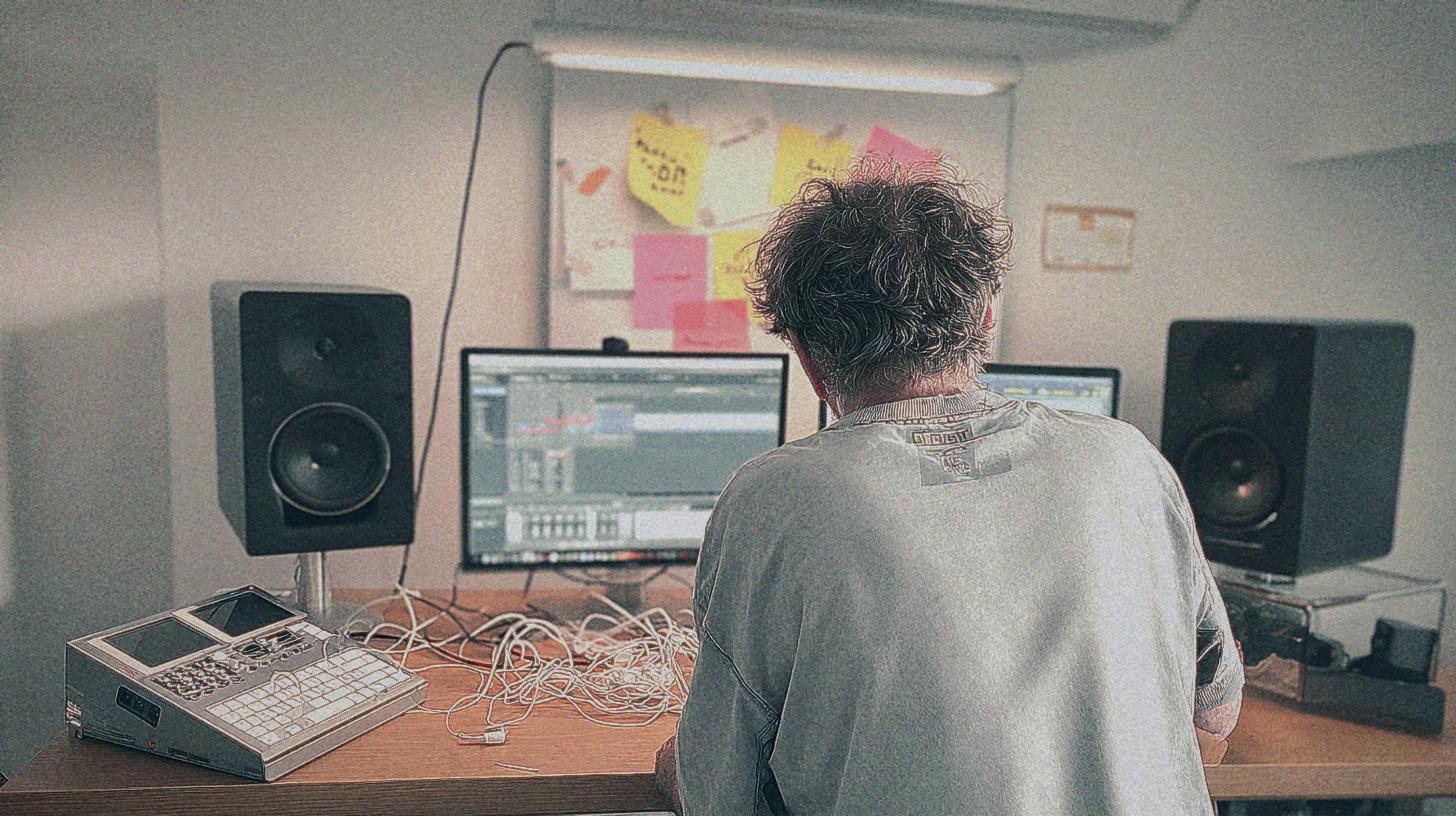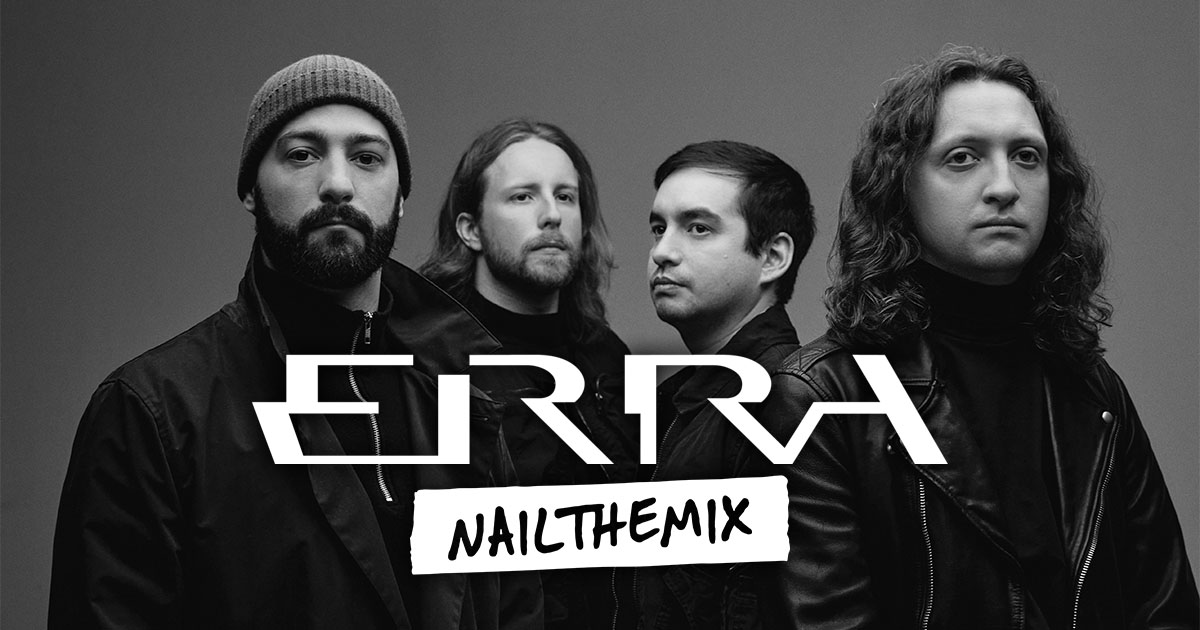
Using FabFilter Pro-Q for Aggressive Metal Mixes
Nail The Mix Staff
Okay, let's be real. If you're mixing metal in the box, you've probably heard of FabFilter Pro-Q. Maybe you own it, maybe you've seen it on countless tutorial screens. But Pro-Q (currently Pro-Q 3) isn't just another pretty EQ plugin with a fancy spectrum analyzer. For metal producers, it’s a legit secret weapon. We're talking about a tool that can take your guitars from muddy to menacing, your drums from dull to devastating, and your vocals from buried to brutal. This ain't your stock EQ. We're gonna dive into why Pro-Q is such a beast for heavy music and some specific ways you can wield its power to carve out truly aggressive tones.
Why Pro-Q Slays for Modern Metal
It’s more than just an EQ; it’s a sonic scalpel, a tone shaper, and a problem solver all rolled into one slick package. Here’s what makes it indispensable for us metalheads.
Surgical Precision: Carving Out Clarity
Metal mixes are dense. You’ve got layers of distorted guitars, pummeling drums, thundering bass, and screaming vocals all fighting for space. This is where Pro-Q’s super-transparent sound and surgical capabilities shine.
- The Spectrum Analyzer is Your X-Ray Vision: See those nasty resonant frequencies in your snare? That annoying whistle in the cymbals? Pro-Q’s built-in spectrum analyzer lets you pinpoint them instantly. Hover over the graph, and it’ll even highlight harmonics.
- Soloing Bands for Laser Focus: Found a problem area? Solo that EQ band. Now you can hear exactly what you’re cutting or boosting, making it easy to notch out room ring in a tom (say, a tight Q at 350Hz) or cut cymbal bleed from a kick mic without gutting the good stuff.
- Steep Filters & High Q Values: Need to eliminate low-end rumble from guitars without affecting the chug? Pro-Q’s brickwall filter type is your friend. Or, use a super-narrow Q (think Q values of 10, 20, or even higher) to surgically remove specific harsh frequencies in distorted guitars (often lurking between 2kHz and 5kHz) or vocal sibilance.
- Pro Tip: For really cleaning up individual drum shells, try a steep High Pass Filter (HPF) on your kick (maybe 30-40Hz), snare (80-100Hz), and toms (around 80-100Hz, depending on tuning) to remove sub-rumble that just eats headroom.
Want to go deeper into overall EQ strategies for metal? Check out our EQ hub page for more.
- Pro Tip: For really cleaning up individual drum shells, try a steep High Pass Filter (HPF) on your kick (maybe 30-40Hz), snare (80-100Hz), and toms (around 80-100Hz, depending on tuning) to remove sub-rumble that just eats headroom.
Dynamic EQ: Tame the Wildness, Keep the Punch
This is where Pro-Q 3 becomes a game-changer for metal. Dynamic EQ acts like a regular EQ, but only when the signal at a specific frequency crosses a threshold you set.
- Snare Ring Control: Got a snare that rings out obnoxiously only on the loudest hits? Slap a dynamic band on that resonant frequency, set a fast attack and moderate release, and tell it to dip a few dB only when the ring pokes out. The rest of the time, your snare tone is untouched.
- Boomy Kick Tamer: Some kick notes boomier than others? A dynamic band on the offending low-mid frequency (maybe 120-180Hz) can gently tuck it in when it gets too loud, keeping your low end consistent.
- Aggressive Vocal De-essing: Harsh "S" sounds cutting your ears off? Use a dynamic band in the sibilant range (5kHz-10kHz) to act as a super-precise de-esser.
- Palm Mute Chug Control: Sometimes, those low-mid frequencies (200-500Hz) in heavy palm mutes can build up and sound woofy. A dynamic EQ band can gently attenuate these frequencies only during the chugs, keeping them tight without thinning out the sustained chords.
- Dynamic EQ can often achieve what you might try with multi-band compression, but with more precision and sometimes a more transparent sound. It’s a fantastic tool to have alongside your standard compression techniques.
Mid/Side Magic: Wider, Meaner, Clearer
Pro-Q’s Mid/Side (M/S) processing mode is ridiculously powerful for metal. It lets you EQ the "Mid" (center) content of your audio separately from the "Side" (stereo width) content.
- Guitars from Hell: Got quad-tracked guitars? Pan two hard left and two hard right. On your guitar bus, switch Pro-Q to M/S mode. You can then gently scoop some low-mids (say, 250-500Hz) out of the Mid channel to make space for kick, snare, and vocals, while leaving the Sides thick. Or, if the Sides have some harshness (often around 3-5kHz from wide-panned cymbals bleeding into guitar mics or just the nature of the distortion), you can tame that on the Side channel without affecting the punch of the Mid. You can even add a slight high-shelf boost to the Sides for extra width and air.
- Drum Overheads & Rooms: Want wider cymbals without making the kick and snare phasey? In M/S mode on your overheads or room mic bus, you could HPF the Side channel higher than the Mid channel (e.g., Sides HPF at 300Hz, Mid HPF at 100Hz) to clean up low-end mud in the width. Or, add some air (10kHz+ shelf) just to the Sides.
- Master Bus Finesse: On the master bus, subtle M/S EQ can be incredible. A gentle HPF on the Side channel can tighten the low end, or a slight boost to the high frequencies on the Side channel can add perceived width and polish.
Filter Slopes & Shapes: Sculpting with Intent
Pro-Q offers a massive range of filter slopes (from a gentle 6 dB/octave up to a super-steep 96 dB/octave brickwall) and shapes (Bell, Notch, Shelves, Tilt, Band-Pass).
- Brickwall HPF/LPF: Essential for metal. Use a brickwall HPF on guitars (maybe 80-120Hz) and bass (30-40Hz) to cleanly remove useless sub frequencies that just eat headroom and clash with the kick. A brickwall LPF on guitars (e.g., 8-12kHz) can tame excessive fizz without affecting the core tone.
- Notch Filters: Perfect for zapping out specific hums, whistles, or stubborn resonances with extreme precision.
- Bell & Shelf Curves: Your bread-and-butter. Boost lows on a kick with a low shelf (e.g., +3dB at 80Hz), add attack to a snare with a bell curve (e.g., +4dB at 5kHz), or gently roll off harsh highs on cymbals with a high shelf. Pro-Q's visualization makes it easy to see exactly how these shapes are interacting.
The Interface: Speed and Clarity for Complex Mixes
When you’re staring down a 150-track metal session, workflow is king. Pro-Q's interface is intuitive and fast:
- Click and Drag: Double-click to add a band, drag it around. It’s that simple.
- Spectrum Grab: See a peak in the analyzer you want to cut? Just grab it, and Pro-Q creates a band right there.
- Piano Roll Display: Shows you which musical notes correspond to frequencies, great for tuning resonances or finding fundamentals.
- Resizable Interface & Full Screen Mode: Essential for detailed work.
Pro-Q in Action: Metal Mixing Scenarios
Theory is cool, but let's talk about concrete applications.
Dialing in Crushing Guitars with Pro-Q
Distorted guitars are the backbone of most metal. Pro-Q helps you make them sit right.
- High-Pass Everything: Seriously. Start with an HPF. For guitars, 100Hz is a good starting point, maybe even 120Hz or higher if the bass guitar is covering the low end. Use a steep slope, like 24dB/octave or even brickwall.
- Scoop the Mud: That dreaded woofiness often lives between 200Hz and 500Hz. A broad cut here (maybe -3dB to -6dB with a Q around 0.7-1.5) can clear things up immensely.
- Tame the Fizz: Harsh, scratchy highs? Use the spectrum analyzer to find those offensive peaks, often between 3kHz and 8kHz. Apply narrow cuts (high Q) to surgically remove them. Sometimes a low-pass filter (LPF) set anywhere from 7kHz to 12kHz can also help smooth things out.
- Dynamic Chug Control: As mentioned, if palm mutes are getting too boomy in the low-mids (around 200-400Hz), set a dynamic band to gently dip these frequencies only when the chugs hit hard.
- Mid/Side for Width & Center Clarity: On a guitar bus, switch to M/S. Try a gentle cut in the Mid channel around 300-600Hz to make space for vocals/snare. You could also slightly boost the high-mids (2-4kHz) on the Side channel for more aggressive width.
Punchy, Clear Drums That Hit Like a Sledgehammer
Pro-Q can make your drums cut through the densest wall of guitars.
- Kick Drum Domination:
- Sub Bass: HPF around 30-40Hz. Boost the fundamental (often 50-80Hz) with a bell or low shelf.
- Boxiness Removal: Cut offending frequencies in the 300-600Hz range.
- Beater Click/Attack: Boost anywhere from 2.5kHz to 7kHz to help it cut. Try a dynamic band here if the click is inconsistent.
- Snare Drum Crack & Body:
- Body/Fatness: Boost around 150-250Hz.
- Ring Removal: Find the main resonant frequency (often 400Hz-1kHz) and use a narrow static cut or, even better, a dynamic band to dip it when it rings.
- Attack/Crack: Boost between 3kHz and 8kHz.
- Toms that Thunder:
- HPF to remove low rumble (around 80-100Hz).
- Scoop mids (300-800Hz) to prevent muddiness and make them sound more "scooped" and modern.
- Add attack (3-6kHz). Use dynamic EQ to control excessive sustain or ring.
- Cymbals & Overheads: Sheen, Not Shriek:
- HPF generously (e.g., 300-500Hz) to remove shell bleed and low-end mush.
- Carefully notch out any harsh resonances (often 2-4kHz).
- Add "air" with a high shelf boost (10kHz and above) for a polished sound. Be subtle!
Vocals That Claw Their Way Through the Mix
Metal vocals need to be aggressive and intelligible.
- HPF is Non-Negotiable: At least 100-120Hz, often higher for screams, to remove plosives and rumble.
- Clear Nasality/Honk: Gentle cuts in the 800Hz-1.5kHz range can sometimes clean this up.
- Presence & Intelligibility: Boosts in the 2kHz-5kHz range help vocals cut. Be careful, as this area can also sound harsh.
- Dynamic De-Essing: Use a dynamic band on sibilant frequencies (usually 5kHz-10kHz) to tame "S" and "T" sounds. Much more transparent than a traditional de-esser often.
- Air for Growls/Screams: Sometimes a very high shelf boost (12kHz+) can add some clarity to guttural vocals without making them thin.
Bass Guitar: The Glue and The Grind
Don't neglect the bass!
- HPF & LPF: HPF around 30-40Hz. LPF can be useful if you have a very clanky top end you want to tame, maybe around 5-8kHz, or much lower if you just want sub.
- Making Space for Kick: If your kick fundamental is at 60Hz, maybe carve a little 60Hz out of the bass and boost the bass at 80-100Hz, or vice-versa.
- Adding DI Grind/Clarity: For DI bass tracks, boosts in the 700Hz-2kHz range can bring out pick attack and definition, helping it cut through on smaller speakers.
- Dynamic Low-End Control: If certain notes boom out, use dynamic EQ in the 80-150Hz range to keep the low end tight and consistent.
Beyond the Basics: Pro-Q Power Moves for Metal Geeks
Pro-Q has a few more tricks up its sleeve.
EQ Matching: Steal Tones (Responsibly)
Pro-Q 3’s EQ Match feature can analyze the spectrum of one track and apply a corrective EQ curve to another to make it sound similar.
- Reference Tones: Got a DI guitar track and a killer reference guitar tone from a commercial record? EQ Match can give you a starting point for shaping your DI. (Don’t expect miracles, performance and source tone are still king!).
- Matching DI Bass to Amp Tones: Blend a DI bass with an amped track, and use EQ Match on the DI, referencing the amp, to help them gel.
- Consistency: Use it to match the tone of vocals recorded on different days or with slightly different mic positions.

100+ Insanely Detailed Mixing Tutorials
We leave absolutely nothing out, showing you every single step
External Sidechain: Dynamic Ducking and Carving
The dynamic EQ bands in Pro-Q can be triggered by an external sidechain signal.
- Kick/Bass Symbiosis: Set a dynamic band on your bass track to gently dip frequencies where the kick hits (e.g., 60-80Hz), triggered by the kick drum itself. Instant clarity.
- Vocals vs. Guitars: Have rhythm guitars duck slightly in the vocal presence range (e.g., 2-4kHz) whenever the vocalist sings. This can improve vocal intelligibility without you having to automate guitar levels as much.
Phase Modes: Natural, Linear, and Zero Latency
Pro-Q offers different phase modes, which affect how it handles the phase relationships between frequencies.
- Natural Phase: This is your go-to for most mixing tasks. It sounds great, has low CPU usage, and introduces minimal latency. It does cause some phase shift (like analog EQs), but it’s usually very musical.
- Linear Phase: This mode introduces no phase shift, which can be crucial for tasks like parallel processing (e.g., on a parallel distortion bus for vocals) or on the master bus to avoid phase issues when summing multiple tracks. The downside? Higher latency and potential pre-ringing artifacts, especially with steep cuts on low frequencies. Use with caution. For metal, you might reach for it on drum buses or the master.
- Zero Latency: As the name suggests, no latency. Great for tracking if you absolutely need to EQ on the way in without any delay, but it uses more CPU than Natural Phase and might not sound quite as transparent on extreme settings.
Wanna See Pro-Q Unleashed by the Pros on Real Metal Anthems?
Phew, that's a lot of ways FabFilter Pro-Q can elevate your metal mixes! From surgical cleaning to aggressive tone shaping, it’s a seriously deep plugin. Learning these techniques is one thing, but seeing them applied in real-time, by the producers who mixed some of your favorite metal albums? That's next level.
Imagine watching a world-class producer dial in the perfect guitar tone using Pro-Q's dynamic EQ on a track from a band like Periphery, or surgically carving space for vocals in a dense Gojira mix. At Nail The Mix, that's exactly what you get. Every month, we bring you the original multi-tracks from massive metal songs, and the producer who mixed it walks you through their entire process, from raw tracks to finished master. You'll see them use tools like FabFilter Pro-Q, their go-to compressors, reverbs, and everything in between, explaining every decision.
If you’re ready to stop guessing and start learning the techniques that make pro metal mixes sound huge, clear, and aggressive, then it’s time to unlock your sound and start mixing modern metal beyond presets. See how the pros use Pro-Q and other essential tools to forge those colossal metal soundscapes.
Get a new set of multi-tracks every month from a world-class artist, a livestream with the producer who mixed it, 100+ tutorials, our exclusive plugins and more
Get Started for $1




